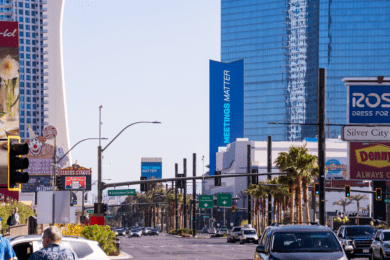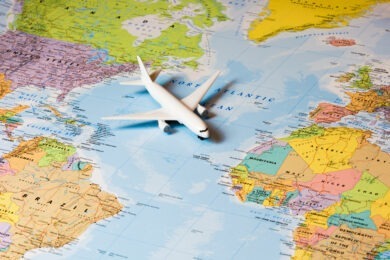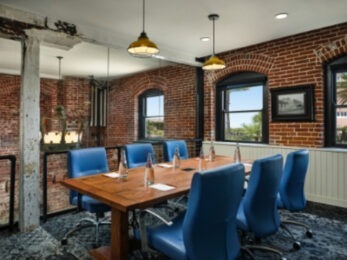As an event professional, you may understand the science of producing a trade show—ordering pipe and drape and carpet, selling booth space and scanning badges—but are you a master of the art of the trade show?
Smart Meetings talked to a pair of expo virtuosos about best practices, fatal flaws, analytics and trends that could change how we approach #boothlife. Oh, and we even included some etiquette tips at the end that you can share with sponsors.
Pre-Show Prep
The seeds of success are sown before the show doors open. Smart event organizers start early, using the event hashtag on social media. Working with vendors to spread the word and tease their presence is a great way to amplify the message.
Create Critical Mass
The event producer is tasked with setting the stage for a productive show. Whether it is called an expo, a hall, an arena, an exchange or another name, the trade-show floor is the place where attendees can find solutions and sponsors can explain their benefits to qualified visitors. An estimated 92 percent of attendees say they are there to learn about what is new. The event organizer just needs to nudge attendees to mix and mingle with vendors.
Related: Las Vegas Ranked Top Trade-Show City
Creative event professionals have learned that embedding the snack or lunch break in the exposition floor is one way to attract attendees. Michael Printy, trade-show chair for Las Vegas Territory, which promotes the nongaming amenities of the Silver State, says that food is a winner when it comes to attracting people. “A tasting, especially if it is native to the destination,” is a great idea,” Printy says.
He is less enamored with the idea of having speakers as neighbors on the show floor. “The entire purpose of the show is to talk to people, and when a breakout is blaring in your ear, that is not conducive. You want people walking by, not running to get to the presentation,” he says.
Printy is also not a fan of incentivizing people to collect stamps at each booth to win a prize: “It doesn’t help you tell the story of your product. They have an ulterior motive—to get stamps.”
Branded photo booths and Instagram-optimized backdrops with props have become popular ways to reach audiences beyond the trade-show floor.
Stand at Attention
Meg McDaniel, senior manager of extended destinations with Las Vegas Convention and Visitors Authority, says once everyone is in the hall, it is the responsibility of the companies to make the most of the opportunity. “I would advise staff to avoid sitting down behind a table or counter as much as possible. When you are on your feet, appear ready and excited about engaging with customers. At the very least, I suggest standing up to speak with customers when they approach,” she says.
When it comes to swag, Printy recommends handing out hot items that will bring people to the booth and asking visitors to fill out an online survey or share details to get it.
McDaniel also says organizers should encourage vendors to not tear down their booths early. “This is a common mistake. We’ve all heard the familiar sound of packing-tape dispensers sealing up boxes while the rest of us are trying to conduct business. Whether attendees have or have not paid to attend, the show has posted hours, and the attendees should be provided every opportunity to see the exhibitors,” she says. Plus, the last customers at a trade show are often some of the most engaged and can actually be your “best sale” of the day.
Follow-up
The show isn’t over, even when the show is over. Smart event professionals continue to build relationships throughout the year. Including vendors in those communications is a win-win, even though many of them will be doing their own outreach. In the case of LV Territory, handwritten thank-you notes go out after B2B conferences and emails for large consumer shows. “If you are out of sight, you are out of mind,” Printy says.
Measure Success
Trade shows are a sizeable investment of both time and money for sponsors. They need analytics to show that they are getting ROI. McDaniel reviews both quantitative and qualitative measurements.
“I review the quantity and type of collateral distributed and how it may have changed year over year,” she says. “What was the engagement of customers? Did they ask a lot of questions? And how many customers registered to receive our digital newsletter?” Her ultimate litmus test is when someone she met at a consumer show returns the next year to tell her about their vacation in the destination.
Printy distributes gift cards with discounts on hotels and promo codes so he can track how many come back from each show. The results offer insights to demographics and markets interested in the destination, and are a tool to strategize future outreach and sales missions.
Booth of the Future
McDaniel says people will always need and want to meet face to face: “I’m not sure that we’re ready to have AI technology completely replace human interaction.” As technology becomes more affordable, she does expect to see more interactive and immersive experiences become the new standard for exhibitors. “A travel show will probably feel more like a trip around the world,” she says.
Printy agrees. People are buying stuff online, but they come to shows to talk to someone who lives there to learn what they can do in the destination. To that end, he envisions a more experiential future for the booth.
“We already allow people to live in the ballroom from any seat using augmented reality,” he says. Ten years from now, it will be even more interactive, allowing attendees to step into a destination in an even more encompassing way.
He is putting planners on notice that they will need to provide more bandwidth as part of the sponsorship price. “Stop nickel-and-diming for the Wi-Fi,” he said.
Trade Show Etiquette
From the presentation, The Art of the Tradeshow, at an LV Territory event featuring Meg McDaniel, LVCVA senior manager of extended destinations; Michael Printy, LV Territory director of trade shows; Sylvia Welsh, Travel Nevada sales manager; and Veronica Bonazza, sales manager for The Terry Fator Show.
- No eating, smoking, chewing gum or candy is allowed in the booth.
- When necessary, drinking should be limited to plastic-bottled water only.
- All purses, briefcases, additional clothing, etc., should be stored away and out of view.
- At least one sales rep should be standing at/in the booth at all times.
- Professional attire and a name tag/badge are required at all times at the booth.
- During active booth traffic, speaking with other vendors/booths should be limited to introducing a client or when information from the other booth is required on behalf of a client. Conversations with other vendors/booths should be concluded immediately when a client approaches your booth.
- Make no derogatory comments about the competition on or off the trade show floor, either to or in front of customers.
- Refrain from any off-color or inappropriate remarks/jokes or personal conversations/opinions that could be overheard by customers.
- Be careful not to interrupt conversations with customers or approaching customers while they are at another booth.
- Introduce customers to other associate members.
- Stay within the boundaries of the exhibit space. “Working” in the aisle is prohibited by show management.




